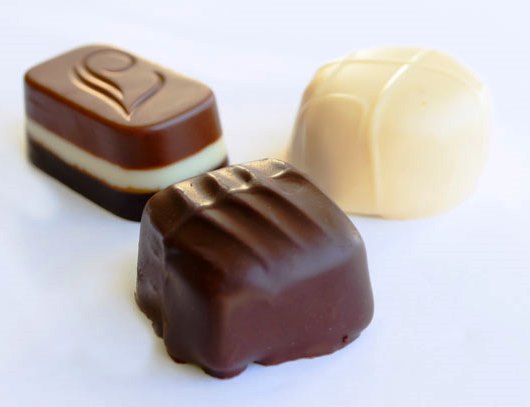
This Passover will be the first ever when I will eat my Passover chocolate and have my ethics, too! Not long ago, Rabbi Warren Stone lamented these Passover chocolate dilemmas in his congregation in Washington, D.C.:
For many years we sold chocolate matzah and chocolate Passover candy as a fundraiser for our Temple religious school. It was always successful. For, who does not like chocolate? Recently we had a chocolate revolution when certain parents, active in D.C. social justice food movements and health, urged us to change our menu! This caused a shock among Temple families who enjoyed the chocolate matzah during Passover. After consultations and debate we decided to forgo the sale for the year and leave it up to further discussion and debate . . . since we are an uber-democratic place! Passover is coming. Will there be chocolate? I hope so!
This additional seder question about the best Passover chocolate highlights what used to be a clear choice between buying chocolate with a traditional certification of Kosher for Passover or a certification for Fair Trade. I used to read the ingredients of the chocolate, looking for quality in taste as well as worker justice commitments, and bypassing chametz (forbidden leavened foods). Now, finally, there is a certified Kosher for Passover chocolate that is also certified Fair Trade, maintaining the ritual Ashkenazi (observed by Jews descended from Central and Eastern Europe) prohibition against soy lecithin emulsifier (kitniyot – grains and legumes prohibited during Passover) and also avoiding child slavery and worker injustice. I generally prefer chocolate without soy lecithin anyway.
The new certification for ethically and ritually-approved chocolate was developed by Rabbi Aaron Alexander, Associate Dean, Ziegler School of Rabbinic Studies at the American Jewish University, Los Angeles. A recent collaboration among Fair Trade Judaica, T'ruah, and Equal Exchange Chocolate created a fundraising program partnership for synagogues and organizations. This resolves Rabbi Stone's dilemma.
To widen the chocolate choices even further, I will join the Virtual Fair Trade Chocolate at Seder Campaign by placing some cocoa beans from my local health food store on our Passover seder plate. Photos – of cocoa beans or a cocoa tree – or a Fair Trade chocolate bar would do as well. This will prompt our discussions about child labor and slavery in chocolate growing.
I wrote A Socially Responsible Haggadah for a Chocolate Seder as an entry point to awareness about the issues of slavery, workers' rights, poverty, economic justice, and fair trade in the chocolate business. In this Haggadah, chocolate becomes the medium for uncovering themes of ethical kashrut, worker equity, and food justice. It celebrates those who labor, often in great poverty, to grow and harvest cacao, including children and young adults, some of them literally in bondage in the Ivory Coast and Ghana's cocoa fields. I hope that the Haggadah for a Chocolate Seder will challenge seder participants to consider worker justice while spotlighting Passover's underlying messages of freedom, dignity, and fairness. Select passages from this Haggadah to add to your seder celebration or run a full chocolate seder at some other time.
When I cover some of my matzah with ethical/Fair Trade and kosher chocolate this Passover, I will recall that I am descended from Hebrew slaves in Egypt, and that, unfortunately, slavery still exists today. I will seek to advance freedom through my chocolate choices, making these Passover days different from all others.
Free download: The Socially Responsible Chocolate Haggadah.
Update: To stay current with these evolving topics, learn more about it from the Jewish Fair Trade Project.

